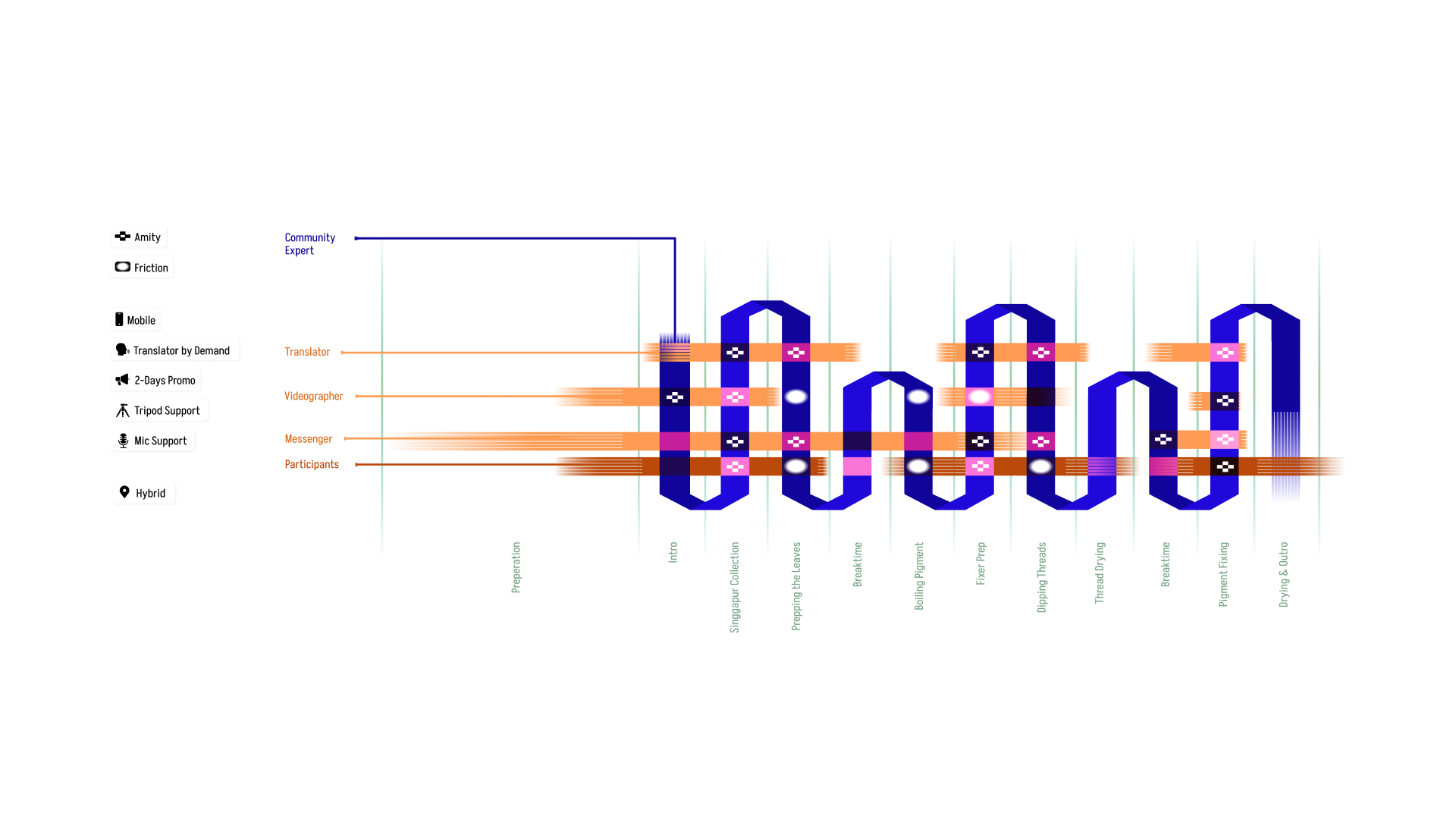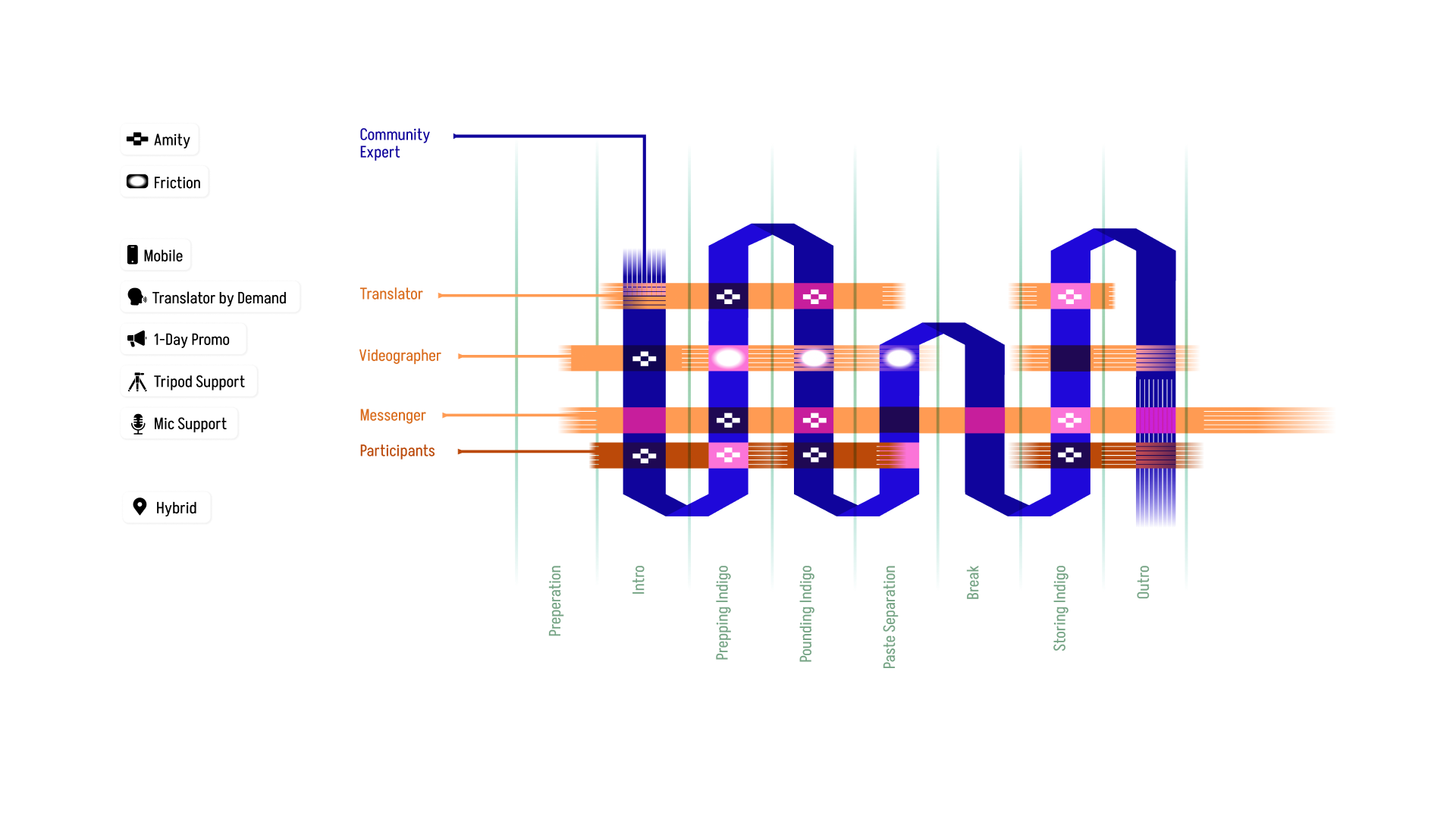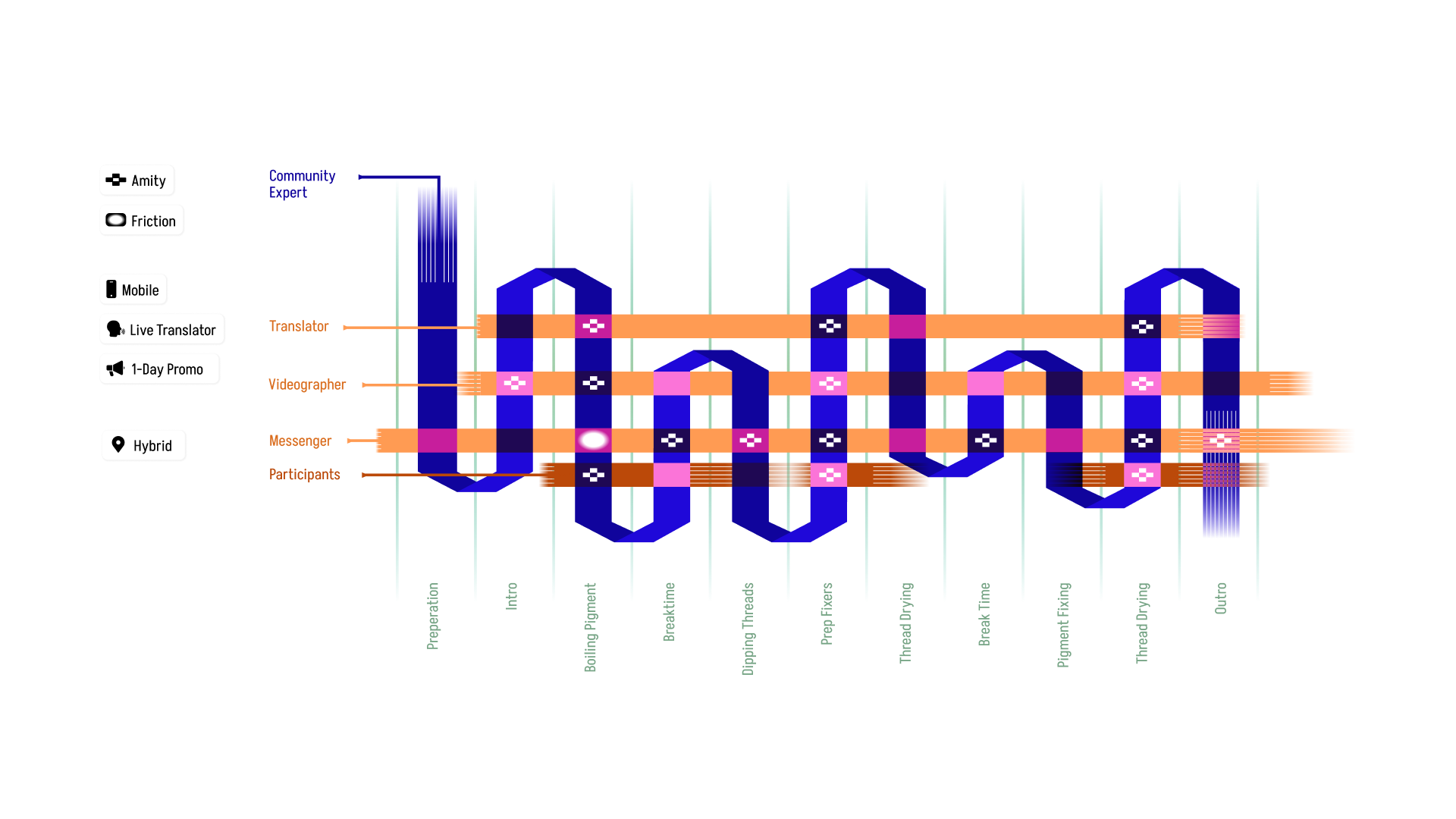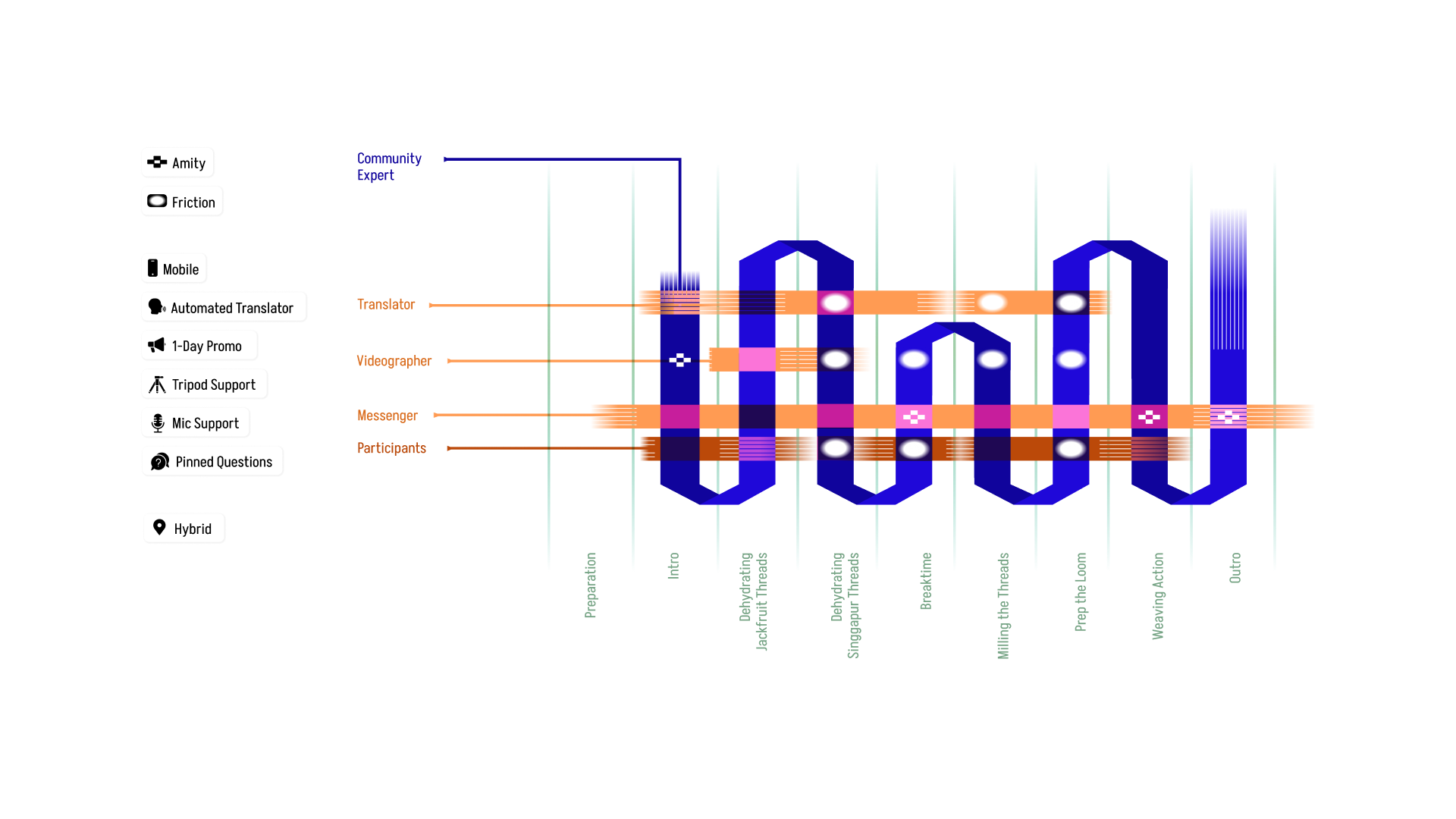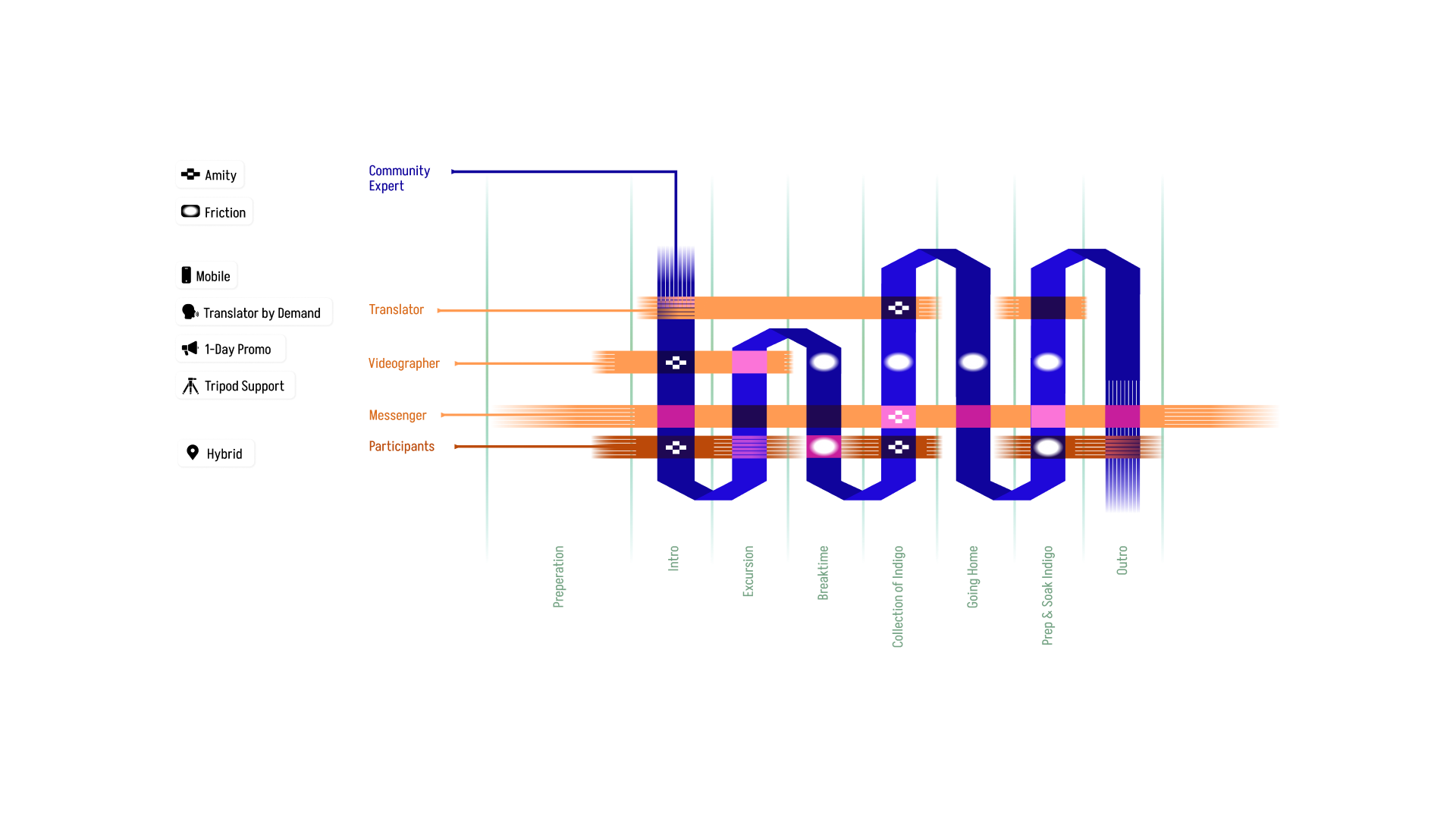Been There,
Done That
Master Project
2023
Design Method
Indigenous Design
Desirable Collaboration
Workshops
Service Design
The great hack of Indigenous Design - a post humanist utopia.
If only our Indigenous ancestors would see what we praise as newfound; they would say “Been there, done that”. In the current climate, the European Academia bubble is actively pushing the idea of ecological design and post-human / symbiotic thinking as a newfound ideology to be urgently implemented. This project is a rebuttal to that - saying otherwise!
︎ Click the Loom to Download the Thesis
An Investigative Case Study on Inclusivity, Accessibility and Power-Shift Frameworks for Desirable Collaborations and Curricula
This project is possible with the collaborations by Sentosa Pringgasela Weavers - Pak Maliki, Mas Dian, and Ibu Marlian;
as well with major help from my mentor Prof. Dr. Joëlle Bitton.
as well with major help from my mentor Prof. Dr. Joëlle Bitton.
︎︎︎ ︎︎︎ ︎︎︎
As a designer in this project, I found myself juggling between the roles of mediator amongst other duties. This way of doing aims to support conversation, build relationship and blend knowledges into actions of practices from different worlds of design - the academia and the community experts of indigenous design.
As a designer in this project, I found myself juggling between the roles of mediator amongst other duties. This way of doing aims to support conversation, build relationship and blend knowledges into actions of practices from different worlds of design - the academia and the community experts of indigenous design.
Through intersectional environmentalist and indigenous lenses, power is to be brought back to the cultural and community experts. To do so is to learn through a relationship and co-design inspired by our different ways of doing. In this project together with the Indigenous ‘Sasak’ weaver community of Pringgasela Lombok, we unpack and learn how we may mediate these desirable collaborations.

Initial Curiosity
![]()
Discussing the works and terms like ‘Feminist Post-humanism’ by authors like Cecilia Åsberg and Donna Haraway, it started an itch of curiosity within myself.
I was sure I have heard of and even lived through my days under the knowledge that this is nothing new; and that it is the way in which many people from where I come from still consider embedded within their thinking and practiced in their ways of doing.
These western authors, backed the idea of post-humanism, with emphasis on the inclusion of the ‘Other’ as definition of their decentralising the ‘Man’. To consider the marginalised, the non-citizen, the woman and the animal within its context of a post-humanist future. I have been reintroduced to ideologies of ecologies and entanglement as a form of development. This, along with technology as development, is covered under the claimed newfound epistemology of Post-humanism.
It was here that my assumption was proved, the exclusion of the ‘Other’ meant indigenous people were never included in the discussion of this not so newfound phenomenon between the entanglements of human and non-humans. So before the discourse is reframed into newness, My initial drive was to unpack and celebrate the wisdom in Indigenous knowledge that could be or were always an expert on sustainable futures. This brought the project to venture into ways of “refusing research” and embracing the journey of relationship-building as means of desirable collaborations and active learning (and sharing).
Outcome 1.
Workshops
(Hybrid and Online)
Impressions: This part of the project required the most attention and patience. Here is when we unpack what it means for a ‘Desirable Collaboration’ and further ideation on how might we act upon it. With the help of Prof. Miya Osaki and her expertise on Social & Community-led design, we came up with and followed a framework that looks to unpack desirability through 3 factors, which are: 1)Understand the culture and its systems, 2)Find what is meaningful, really, and 3)Realigning power pack to the Community over time. We then conducted various workshops, a hybrid one in the Junior Research Conference 2023 in Basel, and 5 other online/mobile-learning workshops in the form of social livestreams.
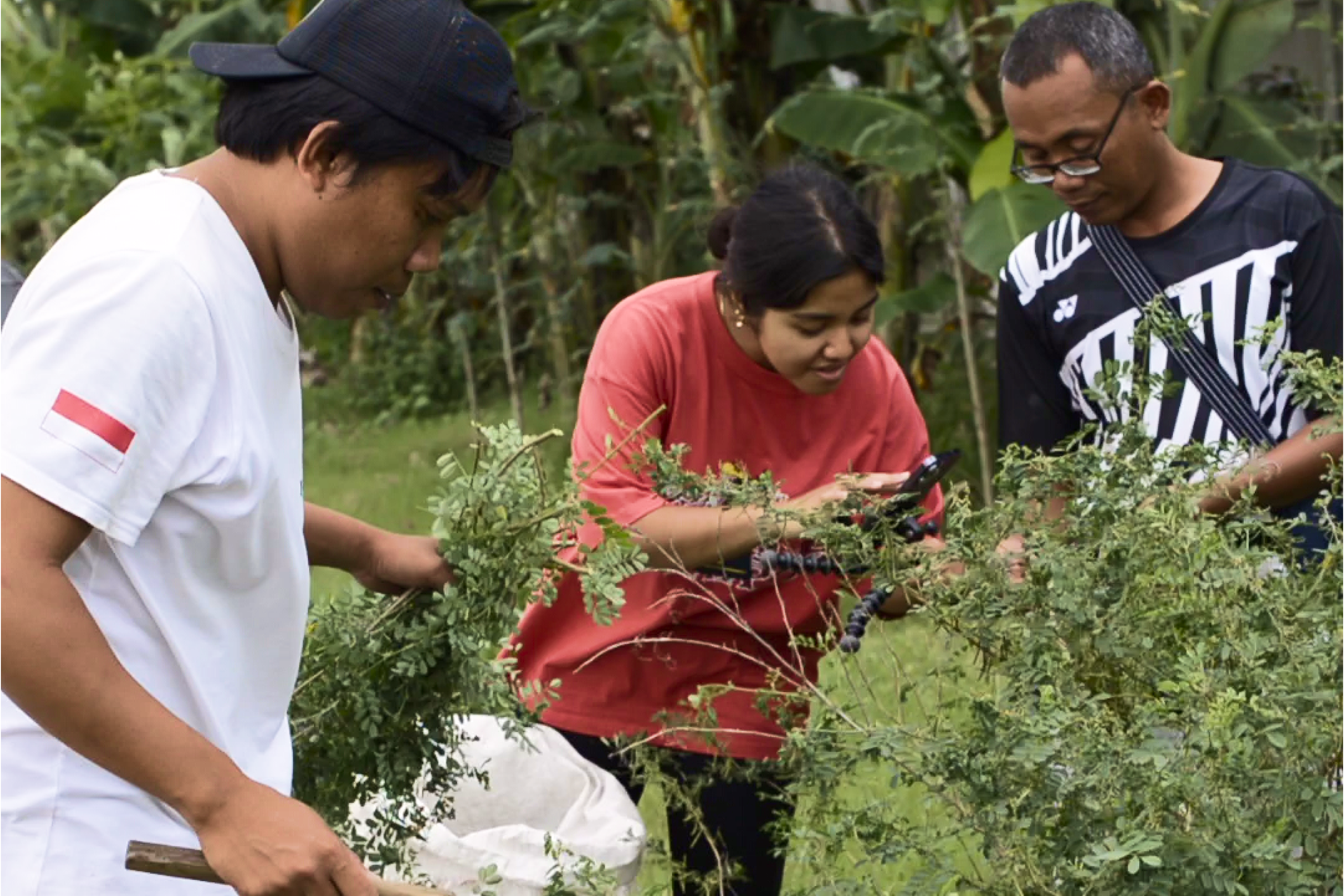
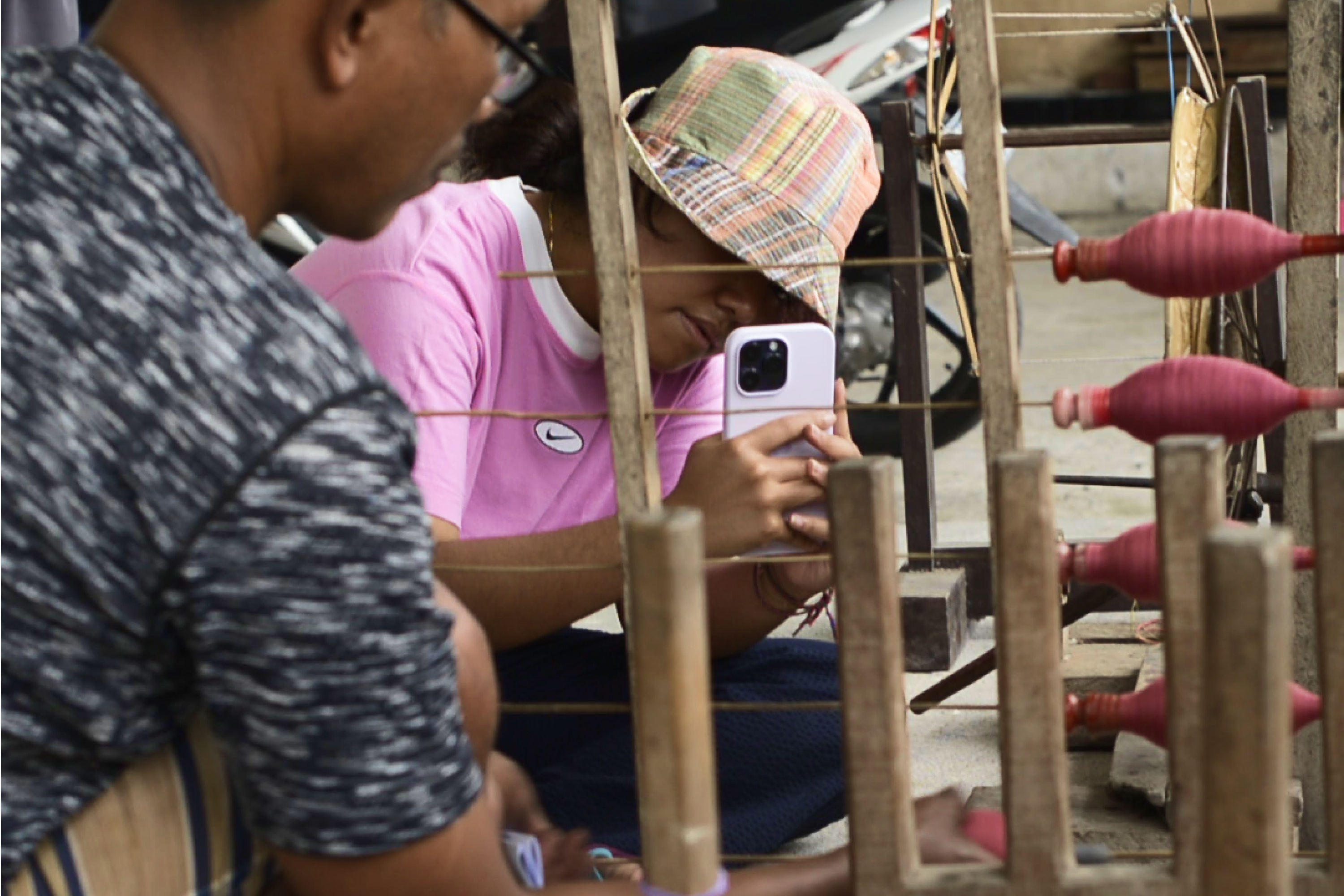
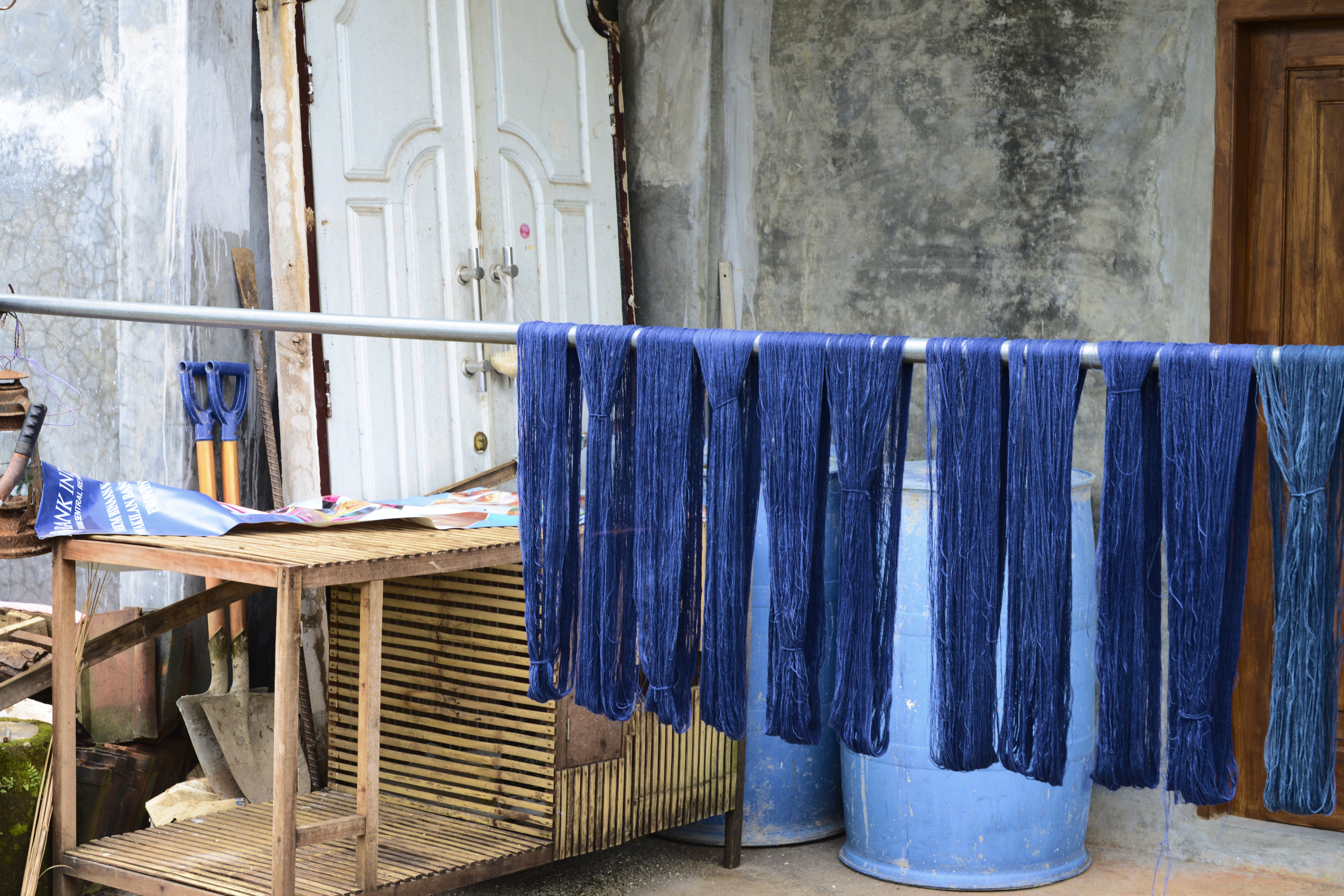


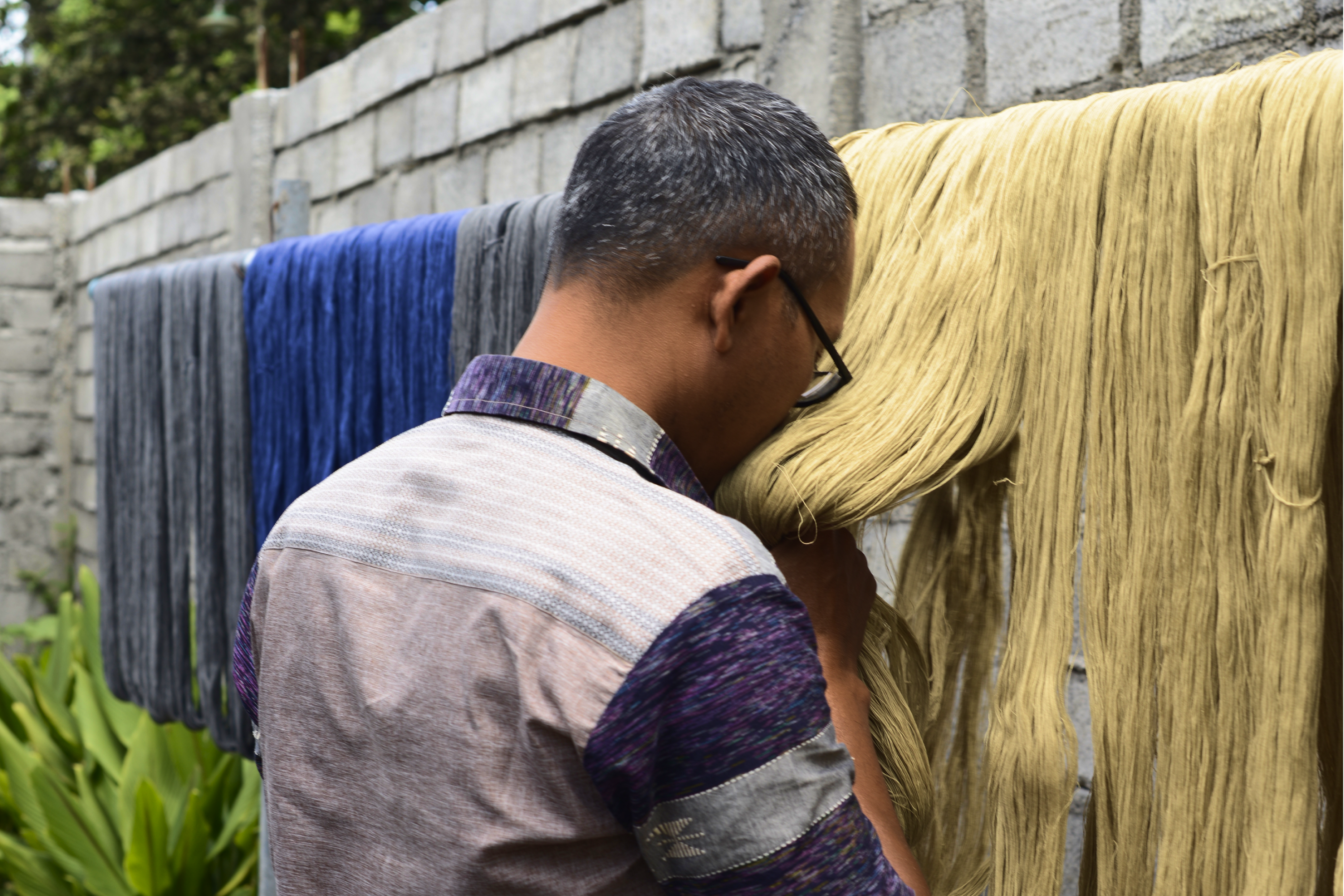
Outcome 2.
Defining Desirable Collaboration Plans for Pringgasela Weavers
Impressions: Curating the master desirable collaborations plan together through our experiences for and with my collaborators to venture into. It bases on our previous mobile and hybrid-learning workshops case-studies, potential markets, as well their ongoing cooperative dynamic of the community.
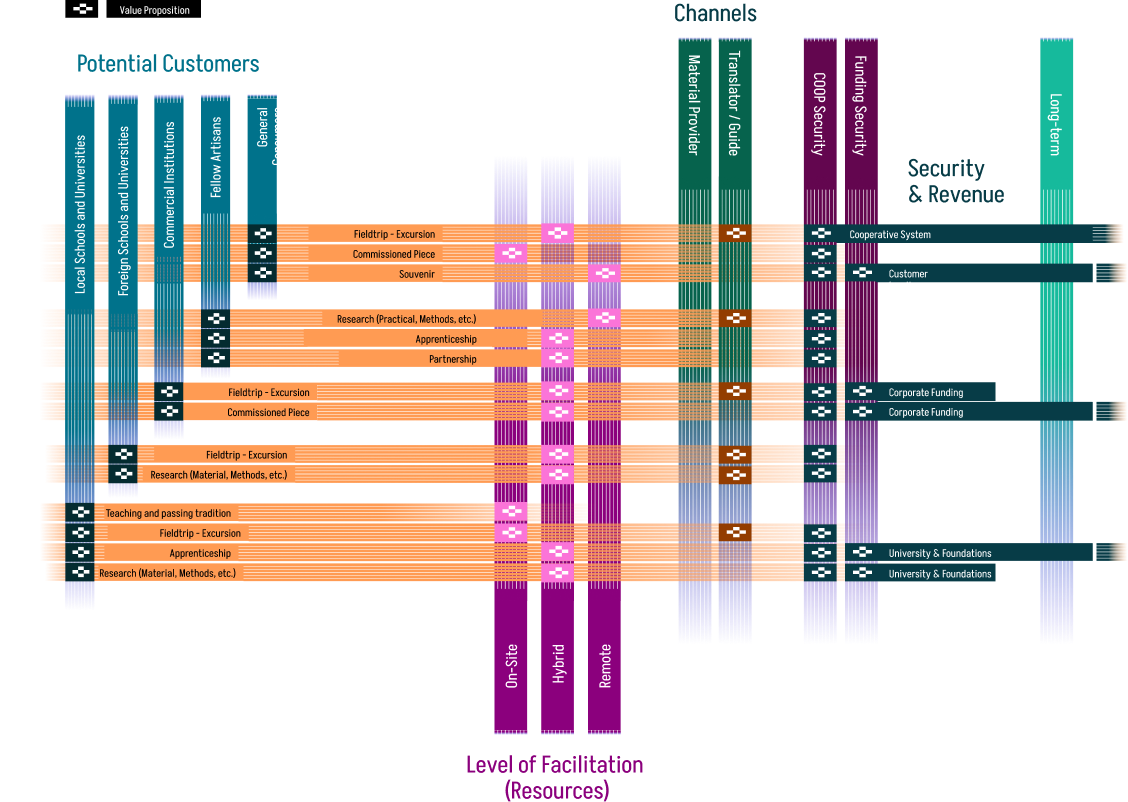
Outcome 3.
Curating archival Written and interactive Audio-Visual exhibit for the Academics
Impressions:
From the collective reaction we gather based on our experiences in fieldwork, workshop feedbacks and other commtaries, these user-journey-like diagrams are curated to help support findings and visualise the capabilities and potential of such ‘Desirable Collaboration’ instances. We see that the experiences has its ups and downs, but it certainly has full potential to acquire all aspects of feasibility, desirability and viability. Which encourages further motivation to invest, integrate such collaborative learning experiences as a norm, especially within academia.
